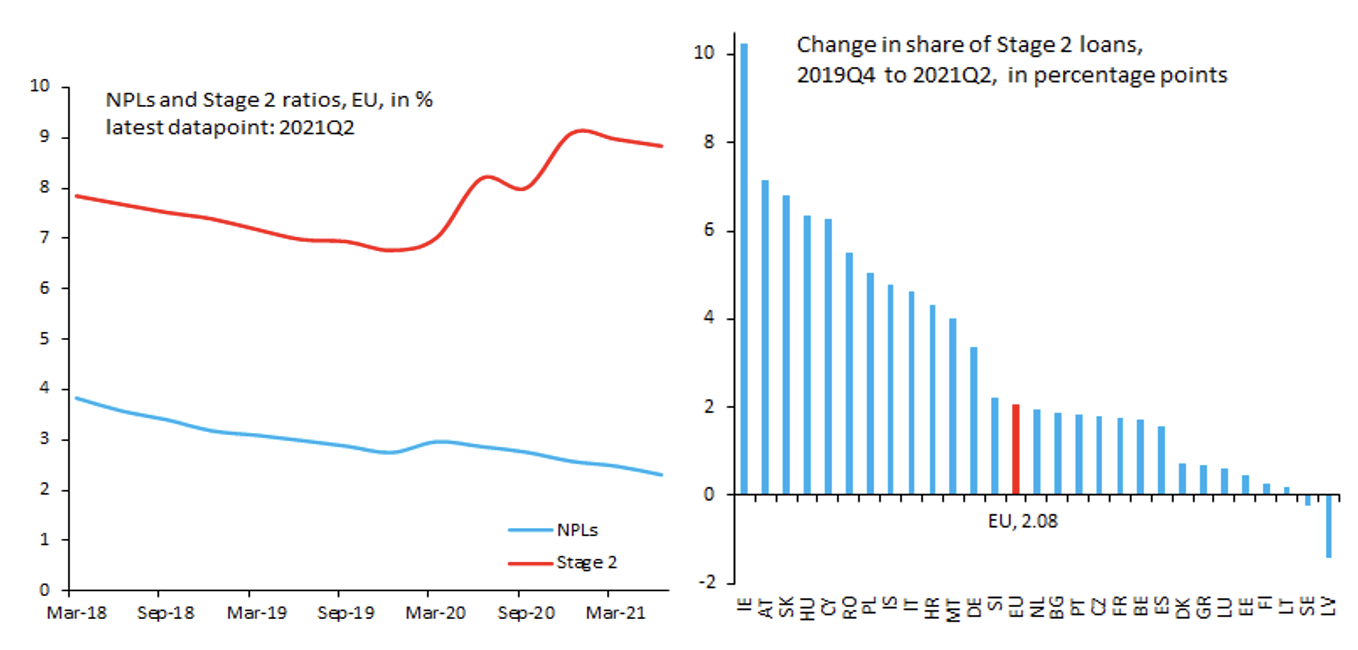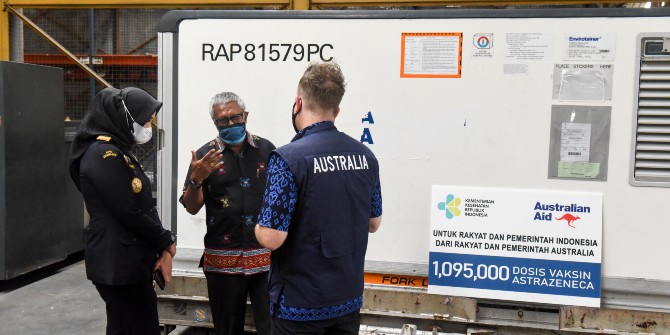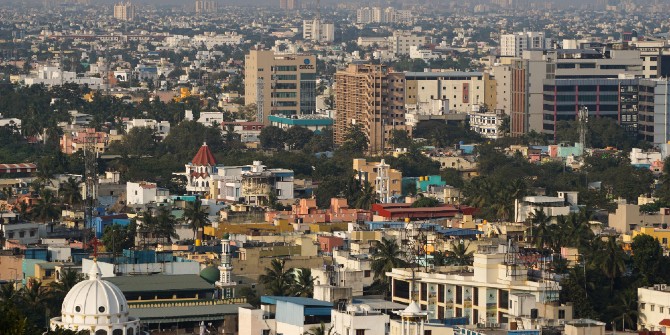Initial fears of rapidly worsening bank asset quality and an ensuing ‘NPL tsunami’ from the COVID pandemic have not materialised so far, thanks to the policy mix that governments have implemented. But to avoid a new wave of NPLs, additional policy action is needed in Europe – particularly as Omicron uncertainty perists, argue Reiner Martin (Joint Vienna Institute), Piroska Nagy-Mohacsi (LSE), Elina Ribakova and Jonathan M Fortun Vargas (Institute for International Finance).
In early 2020, many feared that the pandemic would lead to a huge rise in non-performing loans (NPLs). Despite the steep recession and the uneven recovery since then, these predictions have been proven wrong. In fact, NPLs in many countries have actually declined to a historic low.
How has the widely expected NPL tsunami been avoided in Europe, a continent that struggled so long with NPLs in the wake of the twin global financial crisis in 2008/9 and the eurozone crisis in 2011/12? What can policy makers and business do to keep NPLs at bay now? In our forthcoming article in Eurobook 2022, we identify two key factors at play and, as the extraordinary policy stimulus is starting to be unwound, we suggest additional policy measures to avoid the emergence of NPLs both at the national and the EU level.
A much better NPL landscape before the pandemic
On the eve of the pandemic, the euro area and the EU had made a lot of progress in dealing with the previous wave of NPLs resulting from the GFC and the euro area sovereign debt crisis. NPL levels had fallen substantially from their peaks, banks were better capitalised, regulators had introduced more stringent and consistent definitions for problem assets, and supervisors tightened their approach towards NPL management. Progress was also made towards improving the resolution system, though it remained a mix of national and EU-level measures (with an emphasis on the former) and was never seriously tested. Overall, the euro area NPL ratio peaked in 2014 at just over 8 percent, before declining to 3.6 percent in 2019. In some euro area countries, however, NPL ratios remained substantially higher (Figure 1).
Figure 1: NPL ratios in the euro area and selected euro area countries, 1998-2021

Notes: EA refers to the euro area in the constant 2019 composition. EA6 is the weighted average figure for Cyprus (CY), Greece (GR), Ireland (IE), Italy (IT), Portugal (PT), and Slovenia (SI). Other highlighted countries in the chart are Spain (ES), Latvia (LV), and Lithuania (LT).
This decrease in NPLs was partly due to specific policy measures to deal with them. The European Banking Authority (EBA) agreed in 2013 to a uniform EU-wide definition of NPLs. This significantly strengthened the measurement and comparability of NPLs across the EU and even beyond, as southern European countries outside the EU also adopted them under the Vienna Initiative. The ECB’s Comprehensive Assessment (CA) of the euro area banking system in 2014, comprising an asset quality review and a solvency stress test for 130 significant euro area banks, helped to clarify the true extent of the problem at the time.
The Single Supervisory Mechanism (SSM, often referred to as ECB Banking Supervision) established in 2014 led various NPL initiatives, culminating in the adoption of an EU Council Action Plan on NPLs in July 2017. This covered a wide range of policy objectives and recommendations on supervisory tools, macroprudential approaches, secondary NPL markets and targeted structural reforms.
A “whatever it takes” policy mix, with EU characteristics
As world economy plunged into a deep (though brief) COVID-induced recession, the general expectation was that bank asset quality would rapidly worsen and an NPL tsunami would follow.
Yet the expected NPL shock has not materialised, and the level of NPLs is the lowest on record in almost everywhere in Europe. This is primarily thanks to the successful adoption of a new, “whatever it takes” policy mix – with special EU characteristics. The innovation of this pandemic-induced policy mix was not just its unprecedented stimulus size and coordination between fiscal and monetary authorities, but also the fact that it included, for the first time, specific anti-cyclical bank regulatory measures. Regulatory forbearance was used before as part of crisis response, but this was the first time that regulatory macro prudential relaxation became an integral part of the mix.
Moreover, this required specific measures to remove legal and regulatory obstacles at the EU level. The EU’s fiscal rule – the Stability and Growth Pact – has been suspended since March 2020, along with state aid and competition rules. To be sure, we have seen discretionary acceptance of deviations from the SPG before, and discretionary easing of some state aid and competition rules during the past decade. But we have not seen a synchronised mix of fiscal, monetary, and regulatory anti-cyclical policies that created a virtuous circle between sovereigns, corporates, households, and banks both at the national and the regional EU level.
Direct and indirect fiscal support by the EU member states ranged between a few percentage points to double digits of GDP. Overall, the EU member states provided a total of about 27% of GDP in 2020-21 to date (as a share of 2019 GDP), and the share of guarantees/contingent liabilities has been higher than direct fiscal support (Figure 2). The overall size of fiscal support in the EU and the US have been broadly comparable at about 25-27 percent of GDP in the matter of 18 months, but in the US most of the support was in the form of direct fiscal stimulus.
Figure 2: Fiscal support measures in the EU and the US, 2020-21

Sources: IMF Fiscal database June 2021 and EIB data.
The EU adopted a Temporary Framework to enable member states to provide support to their economies. At the same time, the EBA published guidelines on legislative and non-legislative moratoria considering the COVID shock, specifying the criteria that moratoria must fulfil so that the automatic reclassification and reassessment of distress are not applied. These guidelines were later amended and expanded.
The EU has relied heavy on government guarantees to incentivise lending with risk sharing under unprecedented economic uncertainty. The support targeted businesses in need and those that have limited alternatives to access liquidity from elsewhere (e.g. capital markets). As a result, public guarantee measures were more often aimed at small and medium-size enterprises (SMEs), including micro businesses and the self-employed, which account for large shares of employment and economies in some EU countries, and sectors particularly hard hit by the pandemic.
In addition, EU member states used debt moratoria on loan repayments with the aim of providing financial relief to borrowers by allowing suspension or postponement of payments within a specified period. Debt moratoria were either legislative (decided at national level) or non-legislative (bank/private sector driven). Eligibility criteria varied from country to country and included sectoral exposure, residency (e.g. only domestic exposures are eligible), and performance or repayment capacity assessment.
Use of guarantees and moratoria has varied greatly among countries. Italy had among the highest share of public guarantee programmes with 25 percent of GDP, compared to a median of 4.6 percent for the euro area. Germany, and outside the euro area Britain and the Czech Republic, also used sizeable guarantees. Cypriot banks reported that almost 50 percent of their total loans to households (HHs) and non-financial companies (NFCs) were under moratoria. Banks in Hungary and Portugal also used them extensively.

How effective have these public guarantees been? Data from the Vienna Initiative’s CESEE Banking Survey suggest they were critical. At some point during the pandemic, in the Central-Eastern European region as much as 80% of parent banks and their subsidiaries have taken advantage of government guarantees, and virtually all banks considered these the most important enabling factor for loan extensions.
EU authorities also implemented a wide range of regulatory measures aimed at supporting banks and their ability to provide credit. Over 500 measures were announced as part of the response by global standard setting bodies, five G20 members and other leading financial jurisdictions, totalling 34 jurisdictions and authorities. Micro- and macroprudential authorities focused on measures to boost banks’ capital, liquidity, provisioning and other NPL-related measures, as well as changes to implementation schedules and reporting requirements.
Emerging Europe outside the eurozone has also benefitted greatly from the ECB’s currency and repo operations to ensure necessary euro liquidity, particularly in the early days of the pandemic. These helped enable anti-cyclical stimulus measures in emerging Europe, which they could not mount during earlier crises.
The overall result of the above fiscal and regulatory measures and the economic recovery has been a continued decline in overall NPL levels in the EU to date. Reflecting these developments, the secondary NPL market has slowed during the pandemic. Overall, policies have worked.
Can an NPL “wave” be avoided in 2022?
Yet there are several signs that things are changing, and a deterioration in NPLs can be expected.
First, the level of “Stage 2” loans – underperforming loans with increased credit risk relative to origination but not yet “non-performing” – has increased during the pandemic, stabilising at a level almost two percentage points higher than at the beginning of 2020, with sizeable differences among countries. The diverging move of NPLs (declining) and Stage 2 loans (rising) can foreshadow that NPLs may increase in the near future (Figure 3).
Figure 3: Non-performing loans and Stage 2 loans, 2019- June 2021

Sources: EBA and authors.
Second, more than half of European banks’ exposure is to sectors that were particularly hard hit by the pandemic (hospitality, retail trade, etc). In addition, in some countries, asset prices (including housing) have soared, which is likely to result in a correction further down the road.
Third, with the recovery underway, the extraordinary policy measures that have shielded asset quality since the start of the pandemic will be withdrawn. Although early data indicate that this has not yet brought about major disruptions, there are risks of bank asset deterioration as the simultaneous unwinding of a number of measures such as insolvency moratoria, employment protection schemes, overall fiscal support and central bank liquidity support measures take place. The policy mix itself may also come under stress as demand-supply imbalance induced inflationary pressures call for policy tightening, but new variants such as Omicron may well force a delay. This is particularly relevant in emerging Europe, where several central banks have started monetary policy tightening in the face of rising inflation.
Fourth, in the EU the use of guarantees for NPL resolution has been increasingly constrained by EU competition and state aid rules. This is particularly relevant for two well-established resolution approaches for distressed assets: securitisation and Asset Management Companies (AMCs, often referred to as ‘bad banks’). Both approaches normally require public support, mostly in the form of guarantees. EU state aid and competition rules arguably hindered the establishment of large-scale AMCs in some of EU Member States that were most affected by high NPL levels before the start of COVID. The restrictive European approach towards public assistance of NPL resolution stands in contrast to practices in other parts of the world, notably Asia, where (public) AMCs operate in many countries on a permanent basis and systemic (banking-sector wide) AMCs have a proven record in making significant and rapid contributions to the clean-up of banking sectors suffering from an NPL problem, including in Europe.
In the EU, government-sponsored, systemic AMCs operate within the EU legal framework governing state aid to the financial sector, in particular the Bank Recovery and Resolution Directive and the State Aid communications of the European Commission. These rules and their interplay were clarified in the AMC Blueprint. Despite the publication of the blueprint and the inclusion of systemic AMCs as a possible NPL resolution option in the 2017 EU NPL Action Plan, no such vehicle has been set up in the EU since 2013. The key reason for this is arguably the problem of loss mutualisation and risk-sharing between high and low-NPL countries. Different countries’ legal requirements also present a hurdle.
Policy proposals
We expect that NPLs will rise in the future, but not become systemic. However, this outcome is uncertain, particularly as new variants may hinder the recovery and add to the demand-supply imbalances that have led to inflationary pressure. In this context, we propose several additional measures:
- “Benefit of the doubt” principle. Policy makers must recognise that asset deterioration in the aftermath of the pandemic will be predominantly the result of exogenous shocks to the financial sector. Without belittling the risk of corporate “zombification” as a result of policy support to firms that are not viable in the long run, the “benefit of the doubt” should normally prevail. NPLs may also emerge because of policy tightening that may be desirable to avert inflation, but premature given Omicroon-related uncertainties.
- Speed is of the essence. If NPLs rapidly emerge, policy makers, regulators and banks should act fast and decisively to assess and ultimately remove non-performing assets from balance sheets. This is a clear lesson from previous crises (GFC and sovereign debt crisis in Europe) as well as Japan.
- ”Fast track approach” on guarantees. Any call on already existing government guarantees should be accepted and honoured through a fast-track process. In Europe, more than half of the pandemic fiscal packages were given in the form of loan guarantees. Should these be called on, governments would need to act swiftly and transparently. The time is now for governments to prepare for such fast-track procedures.
- Facilitating secondary NPL markets is of paramount importance. Governments should look into ways of removing any obstacles to the smooth functioning of such markets. This includes also further steps to facilitate the use of NPL securitisation schemes.
- Asset Management Companies may be needed. AMCs have been helpful in some countries to swiftly remove NPLs from bank balance sheets. But in the EU the regulatory burden to set up such vehicles has increased. The EU regulatory framework should now be revised with a view of making AMCs again a more feasible option for high-NPL EU countries, including a flexible adaptation of state aid rules. In addition, in preparation for a more substantial NPL increase than currently expected, AMCs at the EU level should be reconsidered.
- The ECB should maintain its currency swap and repo operations with emerging European central banks. These have been highly effectively to limit market overreaction during the pandemic and will be needed as policy tightening is underway.
- “Forward guidance” on NPL management is needed. The ECB/SSM and EBA, and EU country authorities, should step up their communication strategy to include asset quality/NPL issues.
This post represents the views of the authors and not those of the COVID-19 blog, nor LSE.





